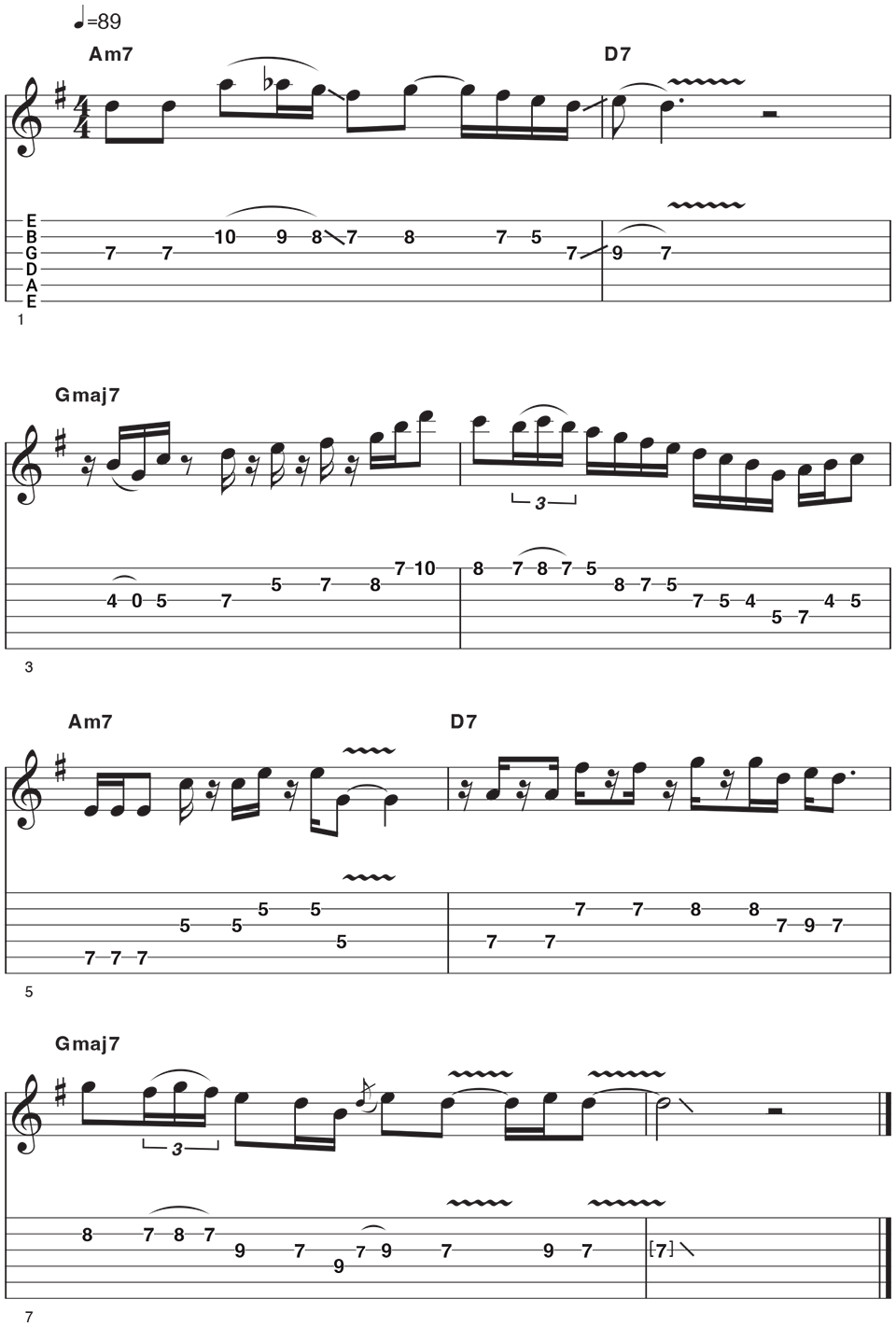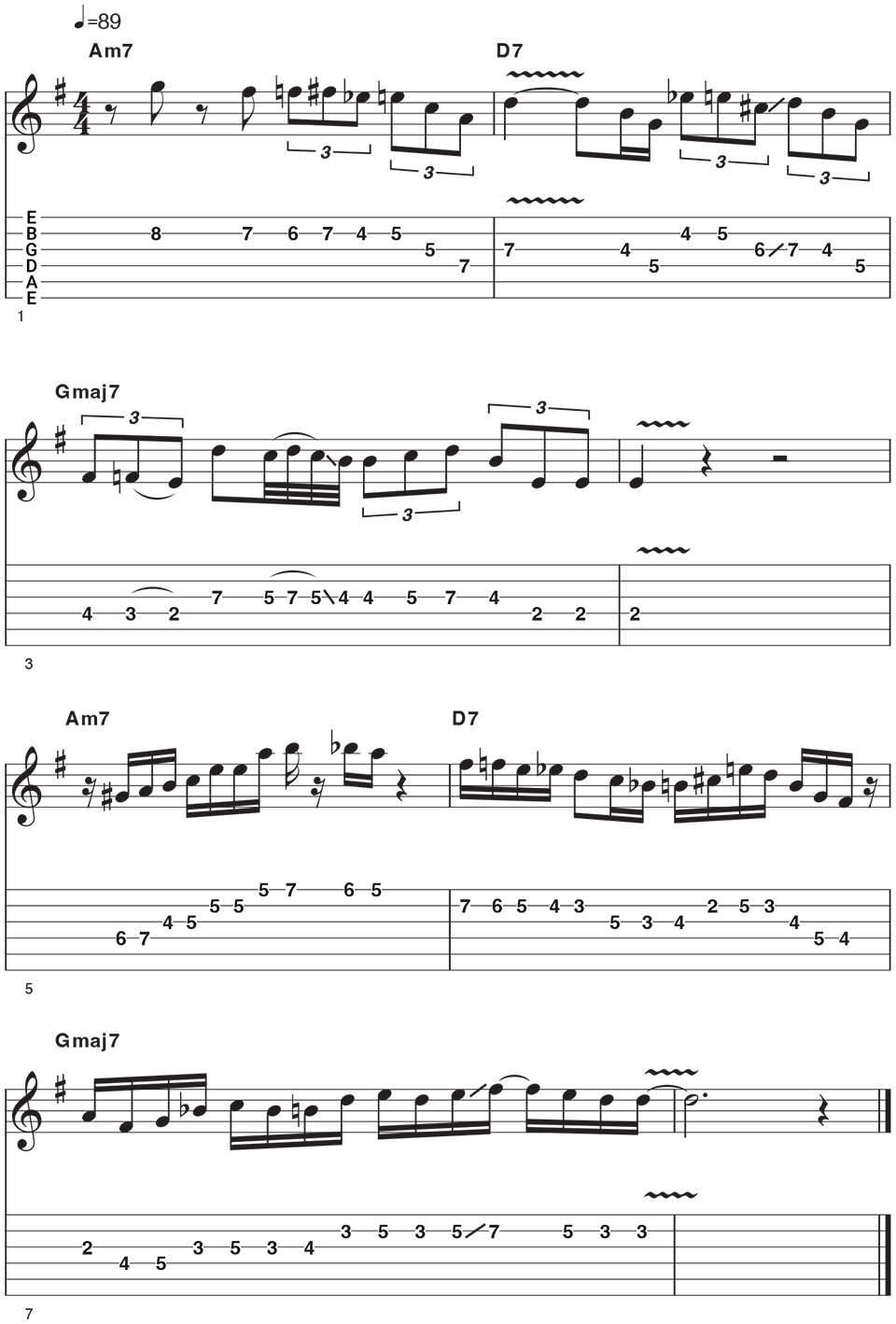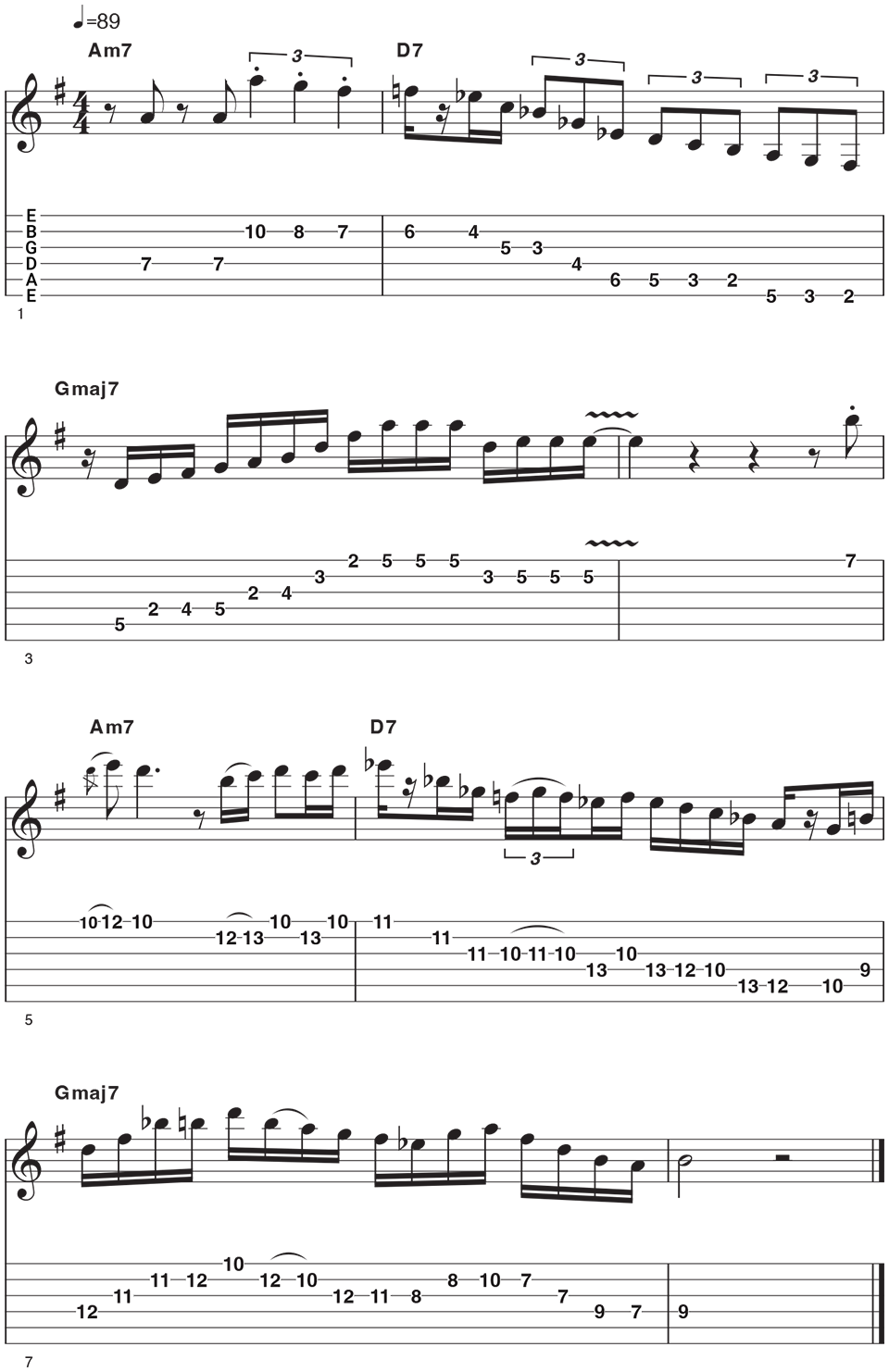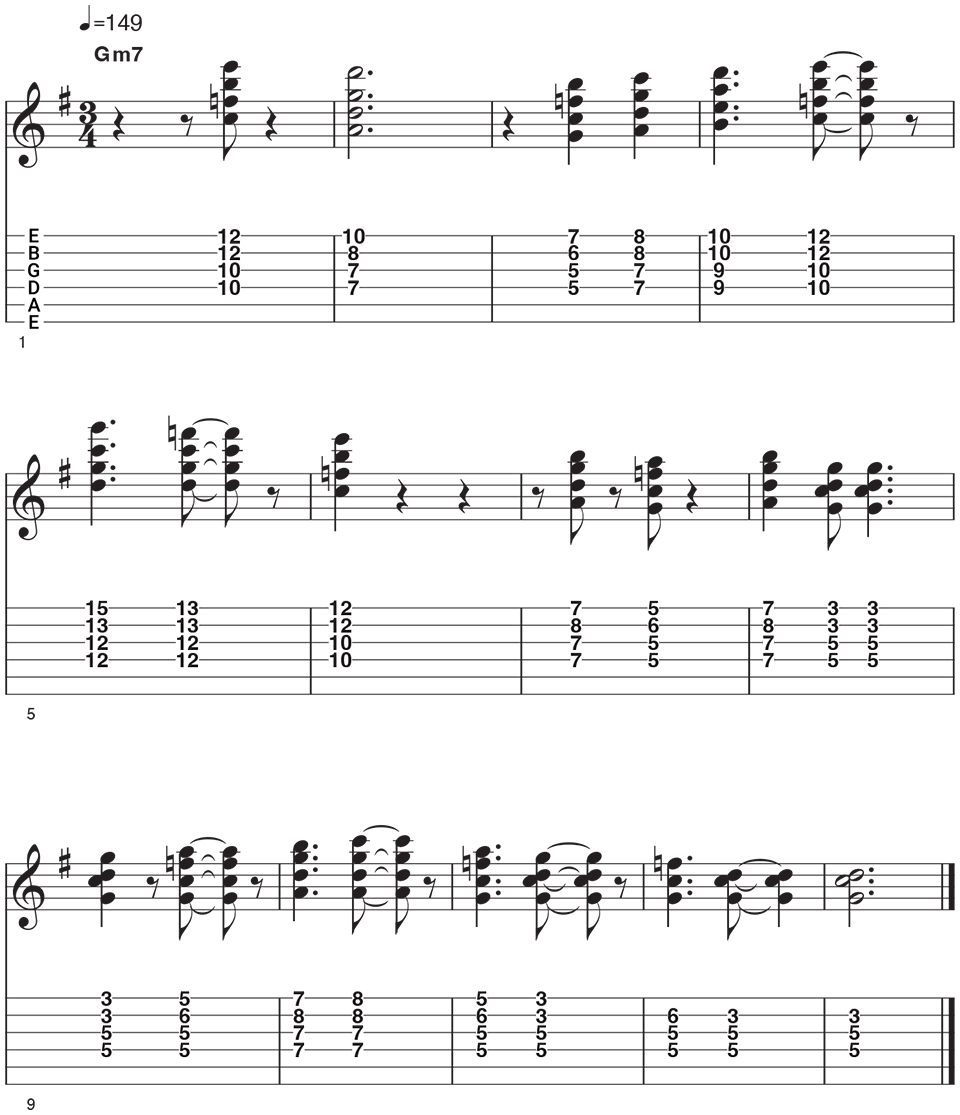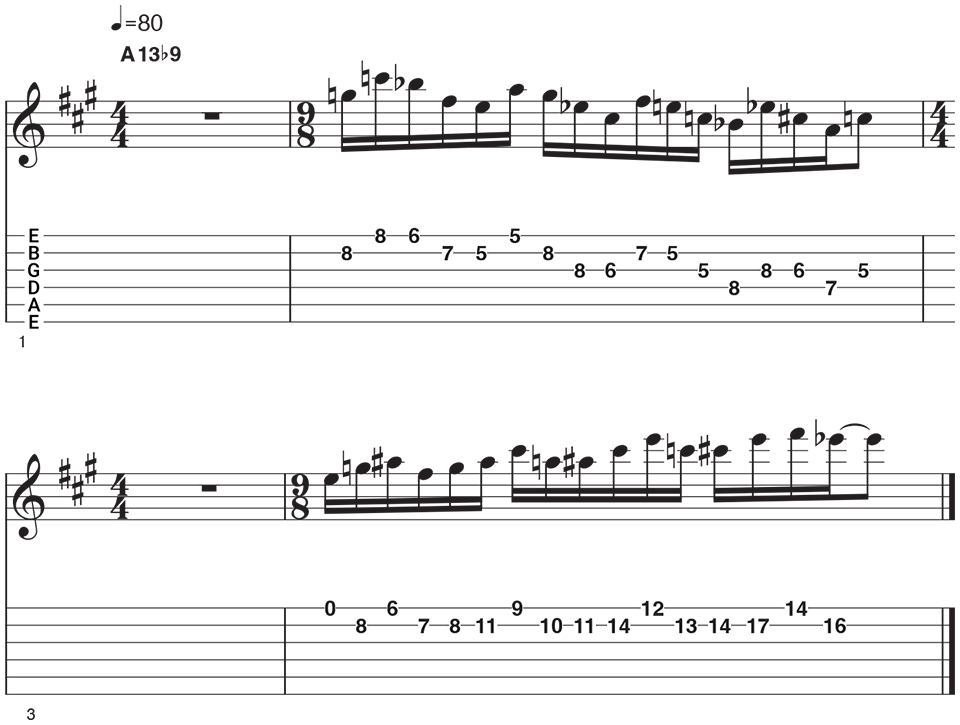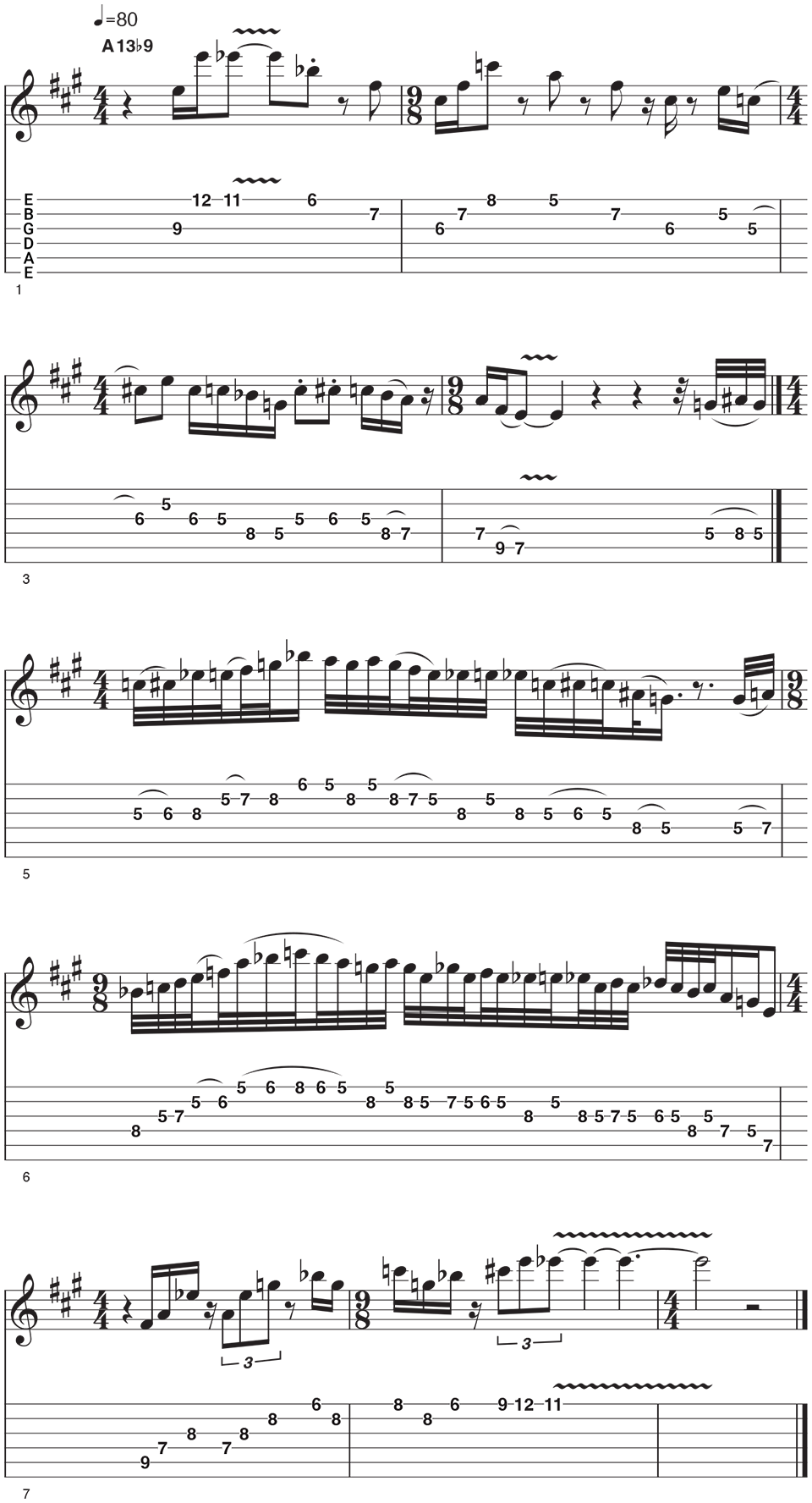Become a pro at sophisticated jazz-rock soloing! John Etheridge teaches the essentials in six examples, with video and tab
John's vibrant soloing covers a broad spectrum — from the Altered and Diminished scales through to wonderful passing notes and quartal chords
John Etheridge has enjoyed a long career, having collaborated with many artists ranging from Stephane Grappelli to John Williams and Soft Machine to Andy Summers. He's also released much of his own music alongside leading his Hot Club inspired ensemble, Sweet Chorus and Frank Zappa tribute band, Zappatistas. His more recent release is Blues Spirits Live which features a variety of great performances including the classic Jeff Beck instrumental, "Cause We've Ended as Lovers."
In this tutorial, John showcases six conceptual approaches that he might employ when improvising. He begins with a trio of ideas against a II V I chord progression loop in the key of G major, specifically the chords of Am7, D7 and Gmaj7.
For the first example, he showcases the value of rhythmic placement and phrasing by simply using the G major scale (G A B C D E F#) throughout. Next, he adds chromatic passing tones to provide melodic tension and release, although still thinking in terms of the parental G major scale throughout. Chord by chord, you can consider this as A Dorian (A B C D E F# G) against Am7, D Mixolydian (D E F# G A B C) against D7 and G major/Ionian (G A B C D E F#) against Gmaj7. Notice all three modes have the same seven notes but they are ordered differently to match the underlying chord.
For the third II V I example, John ramps up the tension by juxtaposing the D Altered scale (D Eb F F# Ab A# C) against the D7 chord, using the intervals of b9 (Eb), #9 (F/E#), b5 (Ab) and #5 (A#/Bb), moving to more stable melodic choices when the chord resolves to Gmaj7.
The final three examples are based around static chord grooves. The first features the G Mixolydian mode (G A B C D E F) over G7, harmonized in diatonic fourth intervals and moved throughout the scale off each note. The concluding two examples shift to an A7 chord and introduce more melodic tension with the A Half/Whole Diminished scale (A Bb C C# Eb E F# G). This is a symmetrical scale based on a repeating pattern of semitones and tones, perfect for moving any idea up or down the fretboard in three-fret/minor third intervals.
As John is freely improvising for most of these playing examples, don’t get too caught up in the micro detail, especially from a rhythmic perspective. Figure out which elements of the examples you like the most and then work them into your own playing.
Performance examples
Ex. 1: Am7-D7-Gmaj7 progression, G major scale soloing
John begins by illustrating just how effective the G Major scale (G-A-B-C-D-E-F#) can be for soloing over the chords of Am7, D7 and Gmaj7. He’s using varied rhythms along with choice note selection and melodic development to maintain interest. Crucially, he wants to avoid making his improvisation sound boring by just going up and down the G major scale.
All the latest guitar news, interviews, lessons, reviews, deals and more, direct to your inbox!
Watch him play example 1 below then tackle the accompanying tab and two G major scale diagrams which highlight the fretboard positions he plays in.
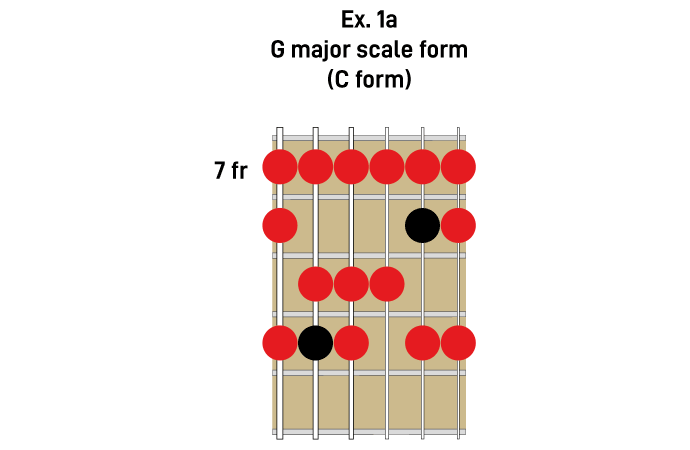
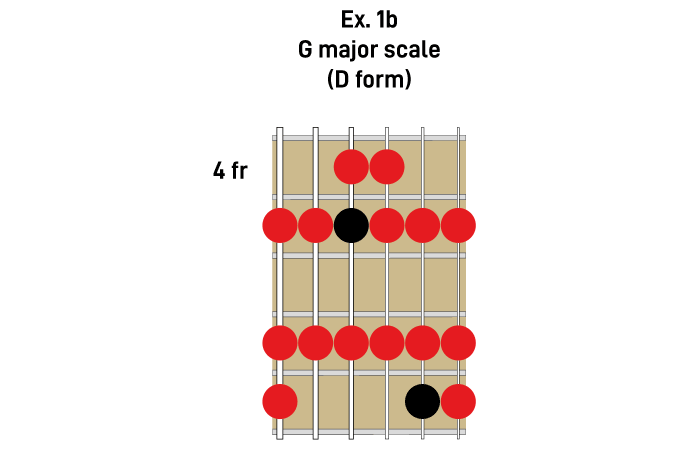
Ex. 2: Am7-D7-Gmaj7 progression, G major scale plus passing tones
Here, John highlights how expressive passing tones in a solo are by using the notes found in-between the notes of the G major scale.
With your own playing, it’s a good idea to go on the hunt for all the tone gaps in common scales like G major. These gaps are where you'll find chromatic opportunities, such as between G and A, or A and B. Remember, if there are seven diatonic tones within any major scale tonality, then there must be five chromatic connections too.
Watch John play example 2 below then check out the tab and the G major scale diagram which shows the fretboard position he's playing in. Where there are gaps between the fretboard diagram's notes, feel free to add in chromatic notes.
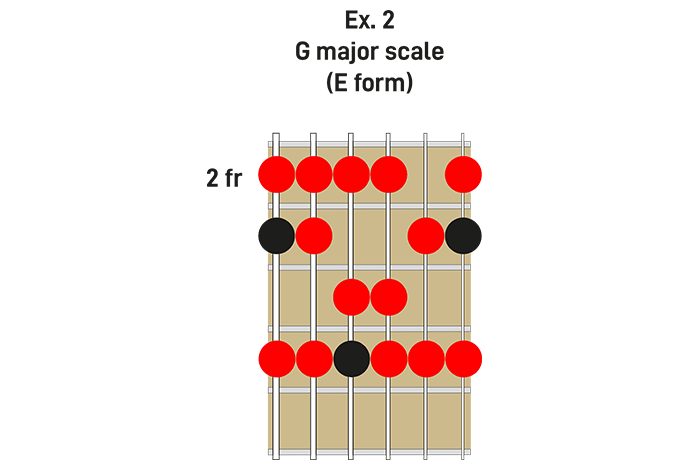
Ex.3: Am7-D7-Gmaj7 progression, using the D Altered scale
John now ramps up the tension and release by using all the available alterations over the D7 chord. Specifically, these are the b5, #5, b9 and #9 (Ab, A#, Eb & E#, respectively). Managing this type of information can prove difficult on the fly, but fortunately all of these notes are encapsulated in the D Altered scale (D Eb E# F# Ab A# C). As an aside, the D Altered scale (also known as D Superlocrian) is the seventh mode of Eb melodic minor (Eb F Gb Ab Bb C D).
Watch him play this example below then check out the tab and two D Altered scale diagrams.
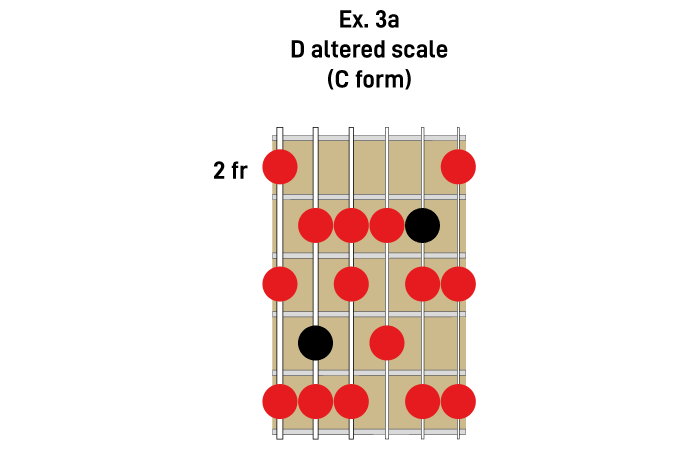
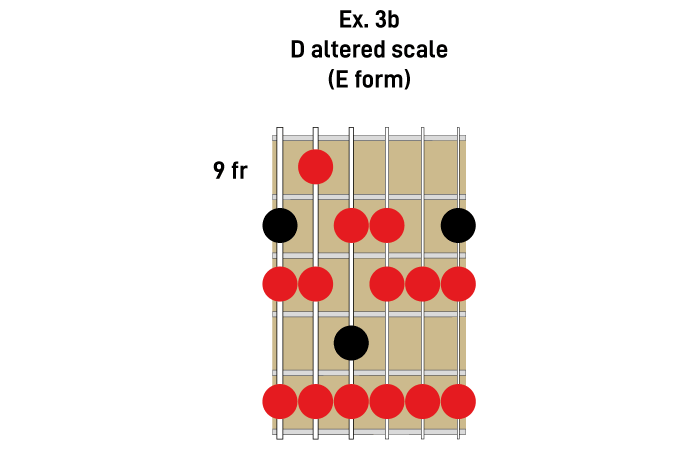
Ex. 4: G7 groove - G Mixolydian soloing using quartal chords
Quartal chord voicings were made popular in jazz by the pianist Bill Evans and specifically his contribution to the seminal Miles Davis album Kind of Blue. As the name suggests, these chords are created by stacking the notes not in thirds, like conventional triads and 7th chords, but in fourths.
Quartal chords sound uniquely sophisticated because they either feature three notes without the 3rd interval (which makes a chord sound major or minor) or four notes where the 3rd is featured higher up, above the 4th which implies a dominant 11th type sound.
Using G Mixolydian (G A B C D E F) as our host tonality, a G quartal chord using four notes would give us (low to high) G-C-F-B. The next four note quartal chord from G Mixolydian would be based on the A note, creating a four note stack of A-D-G-C. You can continue with this approach to complete quartal chords on every note from G Mixolydian.
John's performance and the accompanying tab is below. The fretboard diagram presents G Mixolydian's various quartal chords found on the upper strings.
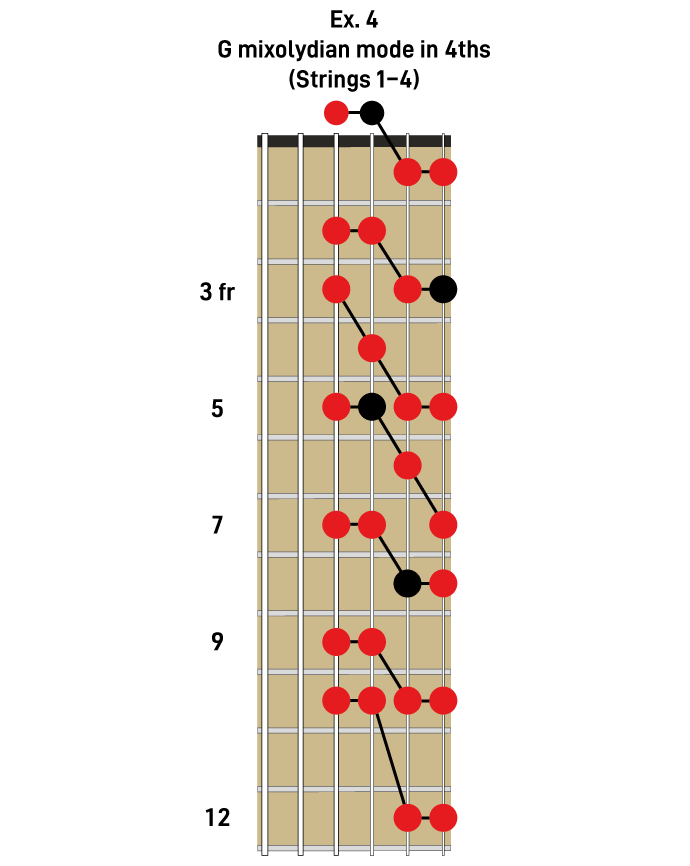
Ex. 5: A7 groove - using the A Diminished scale (the Half Whole Scale)
Here, John departs from the improvisational ethos of the previous examples to provide two specific intervallic motivic lines derived from the A Half Whole Diminished scale (A-Bb-C-C#-Eb-E-F#-G). As this scale is constructed from a symmetrical pattern or repeating semitones and tones, any phrase, lick, line or idea can be repeated up or down in three-fret intervals.
Watch John use this scale below then tackle the tab of his performance and learn the scale's shape at the 5th fret position.
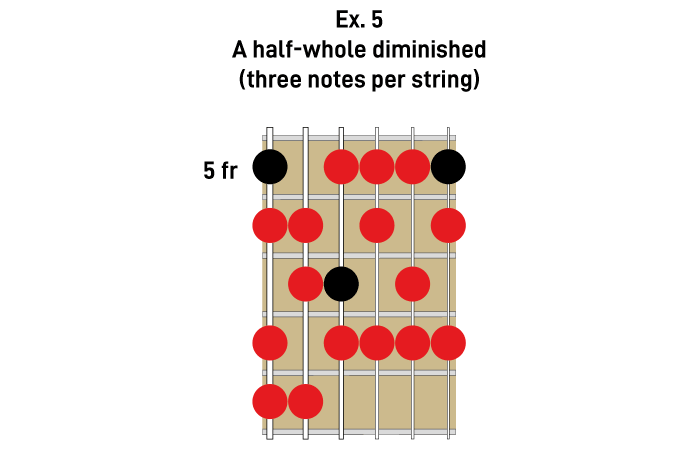
Ex. 6: A7 groove - improvising with the A Diminished scale
In direct contrast to the specifically composed nature of example 5, here we see John improvise freely with the same scale. Treat the rhythmic notation as a guide, as he’s freely flowing in an expressive fashion, although predominantly staying within the constraints of the A Half/Whole Diminished scale.
This example showcases just how effective moving away from the rhythmic grid can sound. Feel free to explore lines that float over the underlying pulse. As always, it’s good to maintain an aesthetic balance between being meticulous in time, and expressively loose and relaxed.
Watch John use the Half Whole Diminished scale below and then work through the transcription, looking for phrases that you find particularly pleasing. To be complete, memorise the extended fretboard diagram so you can use this unique scale freely.
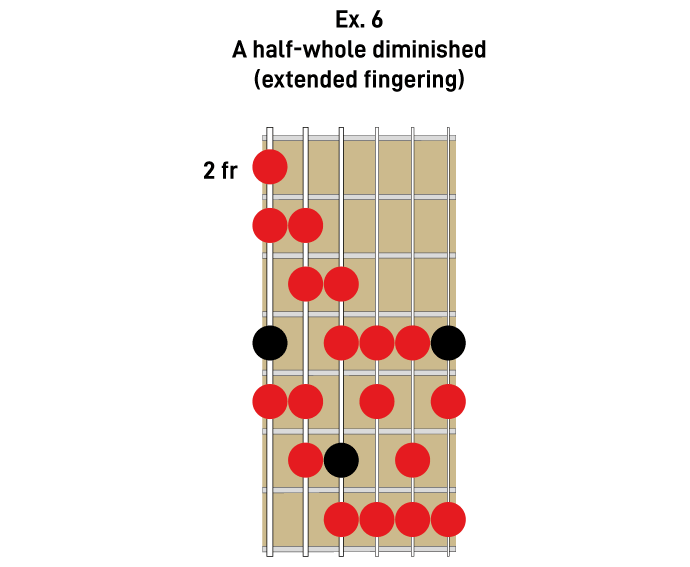
John Etheridge in action
Soft Machine – Tale Of Taliesin
Live performance of a track by the late-'70s Soft Machine lineup with Etheridge (guitar), Roy Babbington (bass), John Marshall (drums) and Karl Jenkins (keys).
Soft Machine - John's elongated soloing
John is soloing flat out here — blues inflections, cascading chromatics, altered scales, blazing sextuplet phrasing, shred picking and wailing string bends. Stunning!
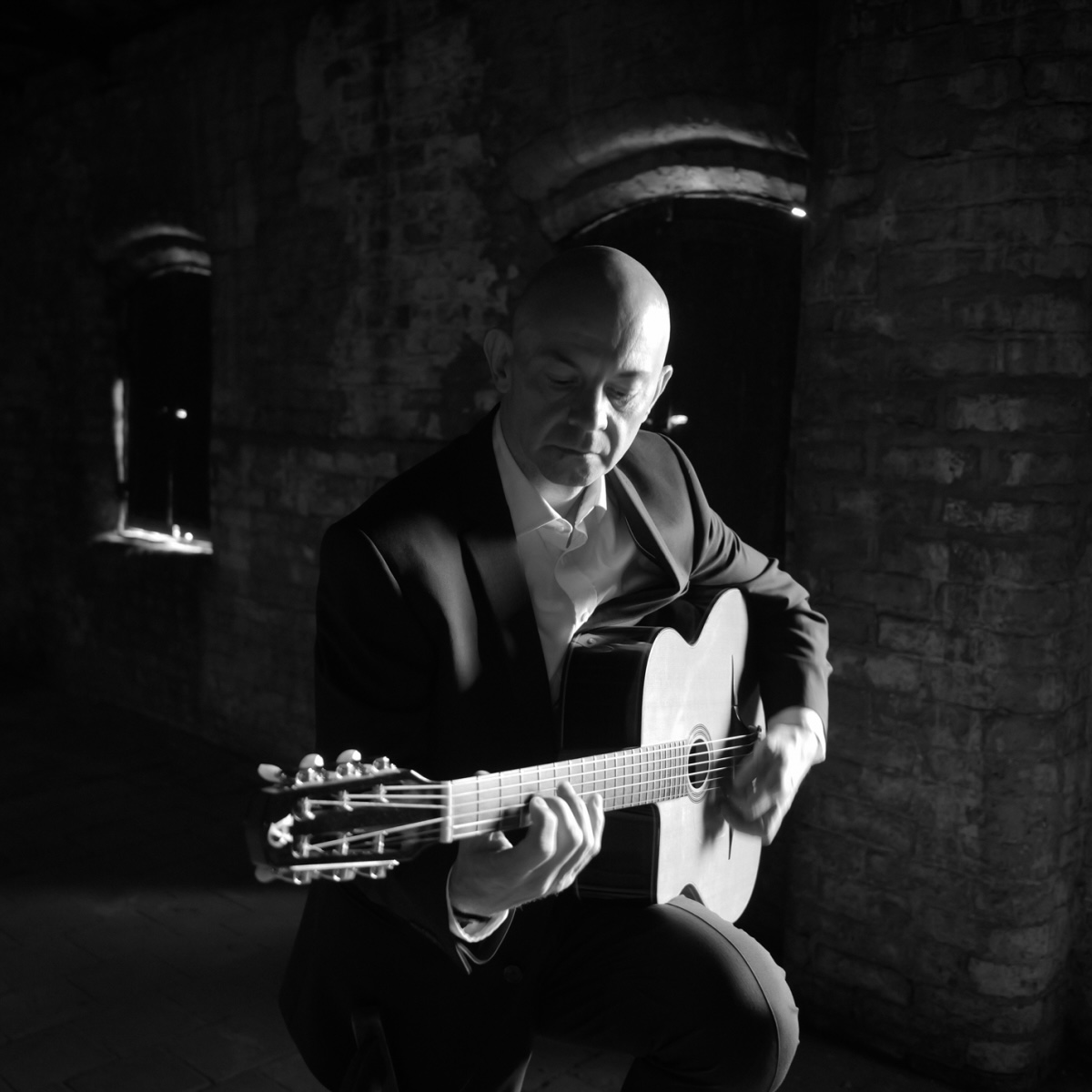
John leads a busy double-life as an artist and an educator. He has performed with artists as diverse as Billy Cobham (Miles Davis), Alex Acuña, John Williams, Frank Gambale, Paco Peña, Biréli Lagrène, Stochelo Rosenberg, Angelo Debarre, Paulus Schäfer, Mozes Rosenberg, Mike Clark and Bill Summers (The Headhunters), Carl Verheyen, Ralph Salmins, Paul Elliott, Keith Carlock and Laurence Cottle. John has toured the world with both Carl Palmer (ELP) and John Jorgenson (Elton John/ Hellecasters) and he is a regular contributor to Guitar Techniques UK, along with contributing numerous lessons for Guitarist UK, Guitar Part (France) and Guitar World (USA).

